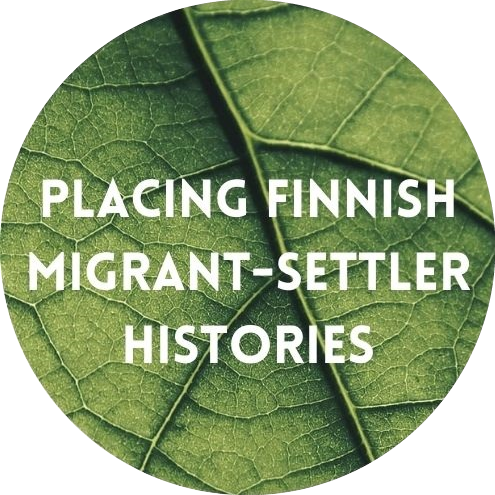
About the Project
Deep Mapping the ‘Uncharted Territories’ of Finnish Migrant History
Kone Foundation, 2020-2025
The objective of this project is to create an openly accessible multilayered and multisensory digital “map” that offers new ways of engaging with Finnish migrant history in Ontario. This map will allow cartography, narratives, photographs, soundscapes, demographic statistics, ecological description, and archival documents to be brought together with the hope of offering new ways of seeing complicated and overlapping claims on place, belonging, and history. Through this approach and tool, Finnish migrant histories will not only be situated in the community’s own significant sociocultural and everyday places, but also spanning over time in the changing contexts of the physical environment, Indigenous presence, state-imposed settler colonial frameworks, and overviews of historical population and economic data. The project contributes to bridging migration history and Canadian settler colonialism studies.

Why try mapping? I had a chance to introduce some of the ideas behind launching this project for History blog in November 2020.
Maps have been and continue to be mighty tools of power. They are used to create and enforce boundaries of space and belonging.
The work of mapping also happens beyond the practice of cartography. Through the stories we tell, we build our connections to communities, places, and pasts. We define who we are and who we are not - or perhaps in other words, who is not us. Yet, regardless of how much we try to entrench the borders of our place and history, we ultimately find that “they are drawn on top of a territorial tapestry already established, the new form never vivid enough to block out what came before” (B. Hoy, A Line of Blood and Dirt: Creating the Canada-United States Border across Indigenous Lands, 2021, 2).
Can we use the tools of mapping to disrupt assumptions of power, history, and place?
In this project, I seek to create and present “maps” of “Finnish places” in Ontario that are more than cartographic in order to explore all the ways that we build foundational narratives and how shifting and layering them may lead to new paths of understanding.
Listening to the Places of Finnish settler history
In Summer of 2022, I had the opportunity to see, feel, and visit places of historic Finnish settlement in northern Ontario. On August 12, I had a chance to discuss this work and the map on CBC’s Up North.
Listen here:


